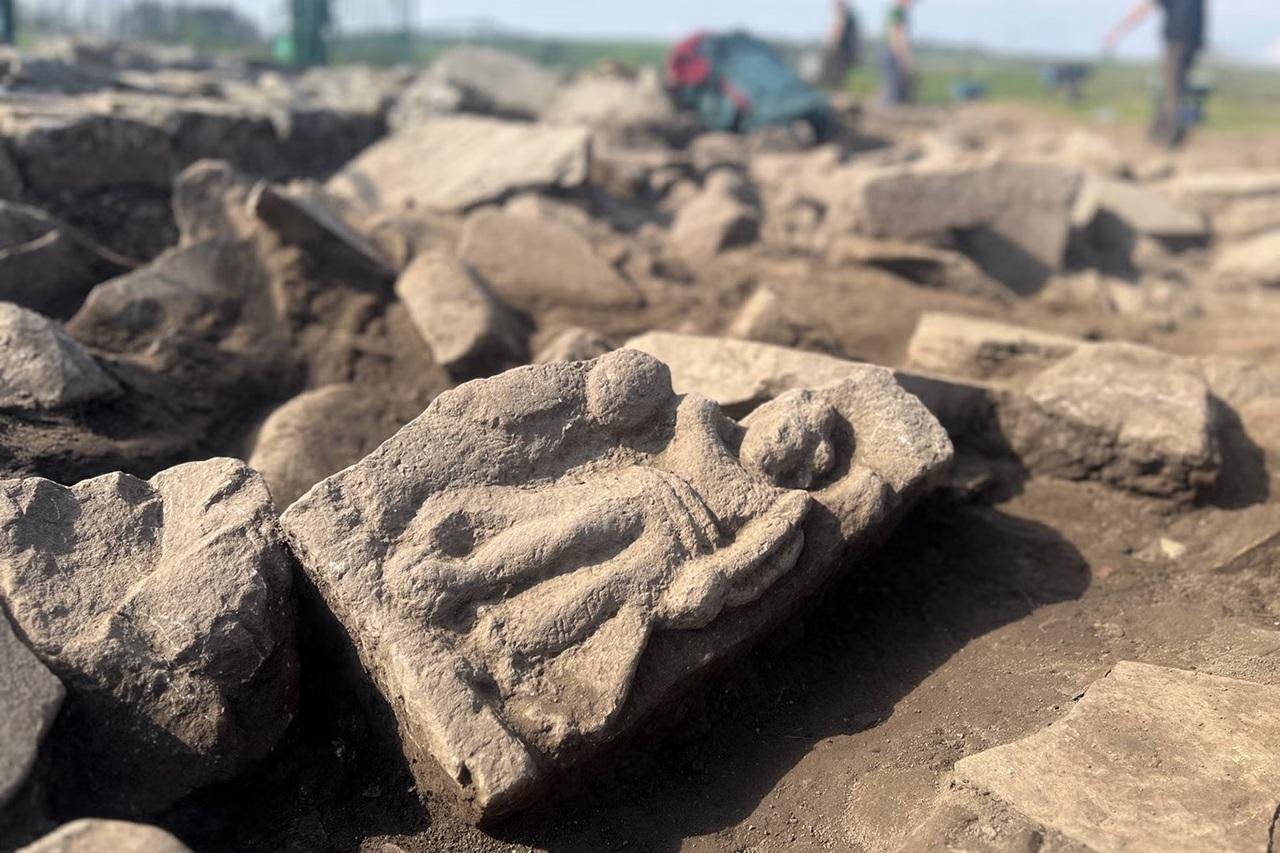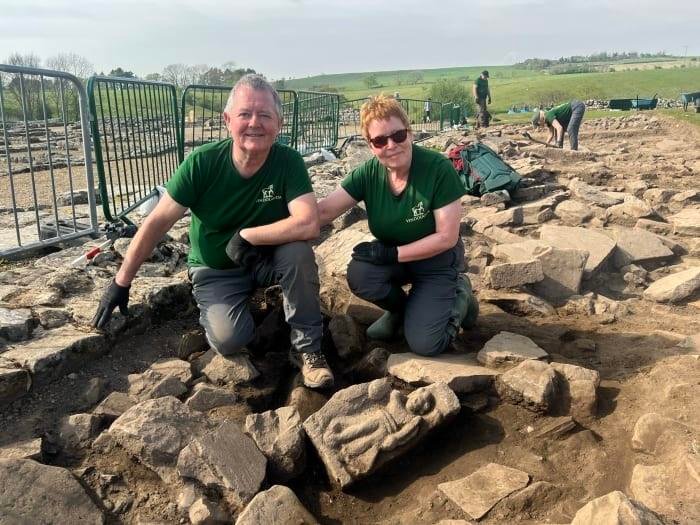A rare stone relief of Victoria, the Roman goddess of victory, has been unearthed at Vindolanda, a Roman fort south of the famous Hadrian’s Wall. The relief was discovered by longtime volunteers Jim and Dilys Quinlan of Merseyside, now in their 21st year of participating in excavations at the site.
 Rare winged Roman goddess statue unearthed near Hadrian’s Wall at Vindolanda. Credit: The Vindolanda Trust
Rare winged Roman goddess statue unearthed near Hadrian’s Wall at Vindolanda. Credit: The Vindolanda Trust
The sandstone relief, measuring about 18.5 inches (47 cm) in height, was found repurposed within a rubble layer over Roman infantry barracks remains. Experts believe the relief had been part of a larger monument that would have stood beneath an ornamental arch and gate structure that adorned the barracks. The fort is dated to around 213 CE, a period shortly after the Severan Wars—a time of great political unrest in Roman Britain.
The Roman goddess Victoria, who was the counterpart of the Greek Nike, was the symbol of divine favor and military success in Rome. Her presence here would signify that the monument may have marked the end of the Severan conflicts and the beginning of a new era for the fort. Dr. Andrew Birley, Director of Excavations at the Vindolanda Trust, said, “Finds like this are increasingly rare these days from Roman Britain, but the beautifully carved figure vividly reminds us that Roman forts were not simply utilitarian; they had grandeur, and of course, the symbolism was a vital part of the culture here for the soldiers almost 2,000 years ago.”
Vindolanda Trust curator Barbara Birley added that the relief was likely painted in vibrant colors and will remain unwashed to allow specialists to test for any remaining pigments. “We will be working with our specialists to see if any traces of the pigment remain,” she said.
 Volunteers Jim and Dilys Quinlan with the goddess sculpture. Credit: The Vindolanda Trust
Volunteers Jim and Dilys Quinlan with the goddess sculpture. Credit: The Vindolanda Trust
The stone was formally identified as a symbol of Victory by Professor Rob Collins, Head of Archaeology at Newcastle University. He confirmed the significance of the piece to the military history of the Roman Empire’s northern frontier.
Vindolanda, close to Hexham in the county of Northumberland, predates Hadrian’s Wall and was occupied between 85 and 370 CE. It is an active archaeological site with remarkable preservation and significant finds, including wooden writing tablets discovered in 1973.
The relief of Victoria will be put on public display at the Vindolanda Museum in early 2026 as part of its “Recent Finds” exhibition, providing visitors with a better understanding of Roman Britain’s military and cultural life.
More information: The Vindolanda Trust





